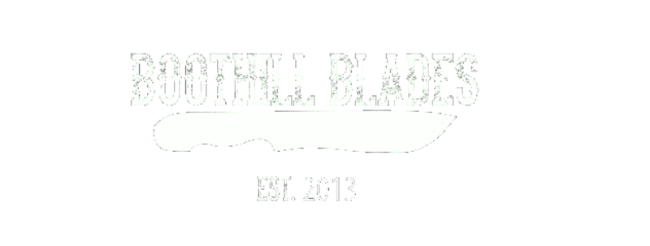Wash and Patina
Most of our knives are non-stainless, carbon steel knives. It takes a little bit more care than a stainless knife, but in the end if you care for it right, it will earn its keep. HAND WASH, and HAND DRY (if you let it air dry, it WILL rust). Never put the knife in the dishwasher! Once any food touches the steel, the metal will react and begin to darken in the space where the food has touched it. I have stained some of the knives with a patina to give a sense of what the steel might look like after you have had it for a while. (I don’t want anyone to be shocked by the darkening of a shiny new knife after the first use.) The knife will slowly create its own patina, replacing mine, darkening where you cut with it the most. If a bit of orange rust does rear it’s ugly head, don’t fret! A little baking soda rubbed into the rest should take care of it. If that doesn’t work, some Barkeepers Friend will take it right out. If you are unsatisfied with that, please send your knife to us for a Spa Day and we will take care of it. A thin coat of oil on the blade every once in a while, or before an extended period without use will keep the blade happy.
Edge
If you have a steel/hone you can use that to keep up the edge (we recommend a ceramic hone). One or two swipes on each side after a heavy use or a couple of times a week will help keep the burr standing up and keep it sharp for longer. Once it is too dull to keep up with a hone, you can sharpen it, or send it to us for a spa day. If anything should happen while using the knife for its intended purpose, I will do my best to fix it, free of charge.
Handle
The wood used on your handle has been stabilized so it should not warp or shift too much with moisture. If it gets a little dry looking, you can rub a coat of oil on it to keep its luster.
Cutting Boards/Utensils
It is important to remember that most, if not all, wooden cutting boards are made with water-resistant glue, not water-proof glue. After every use, wash your cutting board with hot water and a sponge, with soap or a liquid dish detergent, but not with a product intended for the dishwasher. Place the cutting board on edge in a dish drainer or hand dry with a dish towel. Never leave a wooden cutting board soaking unattended in a sink or dish pan. Never put a wooden cutting board in a dishwasher. If you do, the surface of the board will become rough and the glue joints WILL eventually fail.
If any of your wooden products begin to look dry or dull, apply a generous coat of a food-safe mineral oil finish. Heat the oil up a bit first if possible, then wait a few hours (or even overnight) and wipe off every trace with a towel. The idea is to protect the wood, but not allow the oil to build up. Don’t use vegetable oil or olive oil; they get sticky and go rancid after a while. There is no “rule of thumb” on how often you should refresh the finish, but certainly at least 2-3 times each year. You can also sand lightly with a fine grit sandpaper to refresh the "fuzzy" finish at any time.
All of the wood products have already been finished with a mineral oil and beeswax mixture that we make here, but we can send you more of this if you would like.
Thank you very much and if you have any questions or problems, please let us know.


